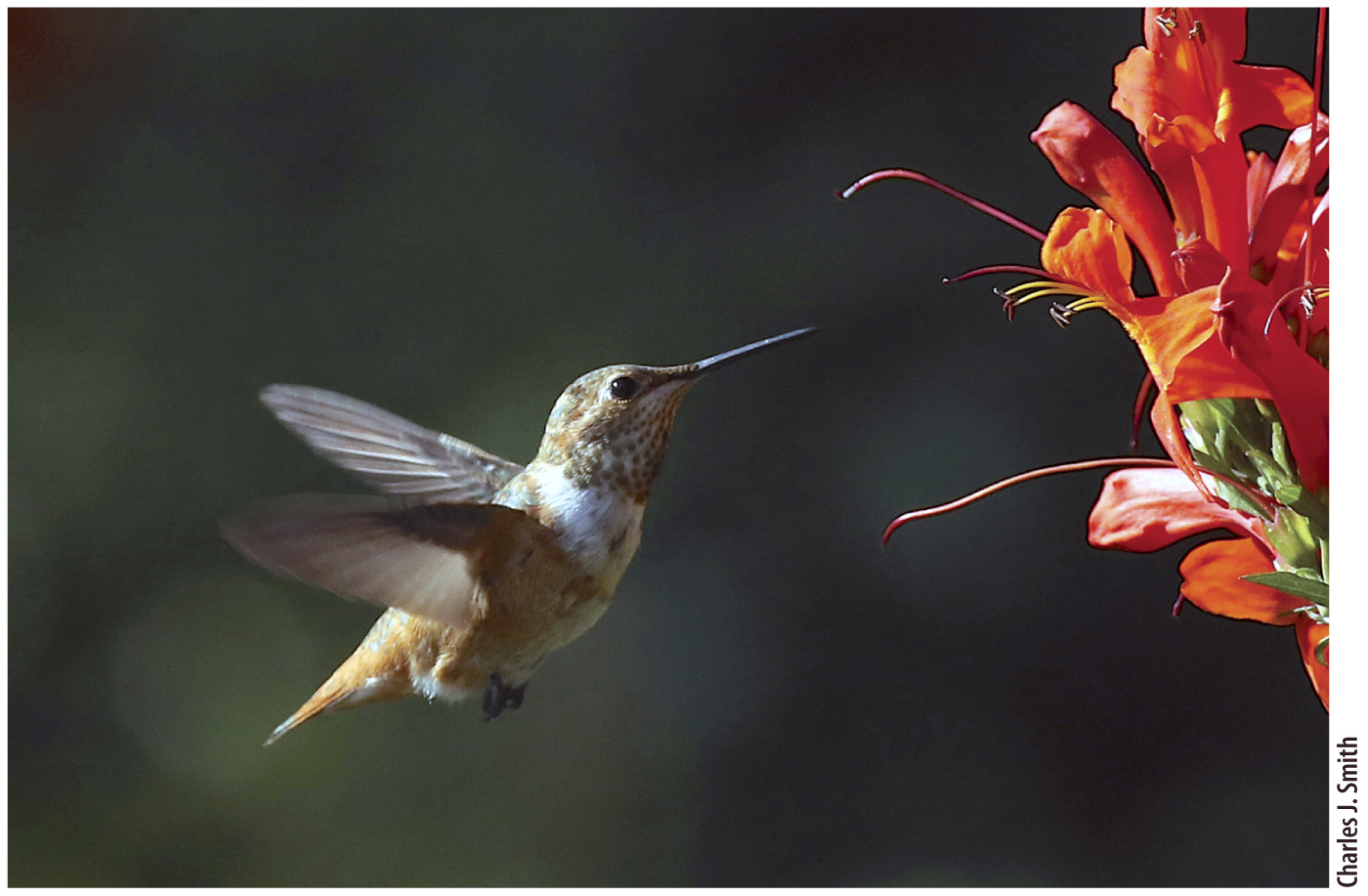Observation allows us to draw tentative explanations called hypotheses.
Observations allow us to ask focused questions about nature. Let’s say you observe a hummingbird like the one pictured in Fig. 1.1 hovering near a red flower, occasionally dipping its long beak into the bloom. What motivates this behavior? Is the bird feeding on some substance within the flower? Is it drawn to the flower by its vivid color? What benefit, if any, does the flower derive from this busy bird?

Observations such as these, and the questions they raise, allow us to propose tentative explanations, or hypotheses. We might, for example, hypothesize that the hummingbird is carrying pollen from one flower to the next, facilitating reproduction in the plant. Or we might hypothesize that nectar produced deep within the flower provides nutrition for the hummingbird—
Charles Darwin’s classic book, On the Origin of Species, published in 1859, beautifully illustrates how we can piece together individual observations to construct a working hypothesis. In this book, Darwin discussed a wide range of observations, from pigeon breeding to fossils and from embryology to the unusual animals and plants found on islands. Darwin noted the success of animal breeders in selecting specific individuals for reproduction and thereby generating new breeds for agriculture or show. He appreciated that selective breeding is successful only if specific features of the animals can be passed from one generation to the next by inheritance. Reading economic treatises by the English clergyman Thomas Malthus, he understood that limiting environmental resources could select among the variety of different individuals in populations in much the way that breeders select among cows or pigeons.
Gathering together all these seemingly disparate pieces of information, Darwin argued that life has evolved over time by means of natural selection. Since its formulation, Darwin’s initial hypothesis has been tested by experiments, many thousands of them. Our knowledge of many biological phenomena, ranging from biodiversity to the way the human brain is wired, depends on direct observation followed by careful inferences that lead to models of how things work.